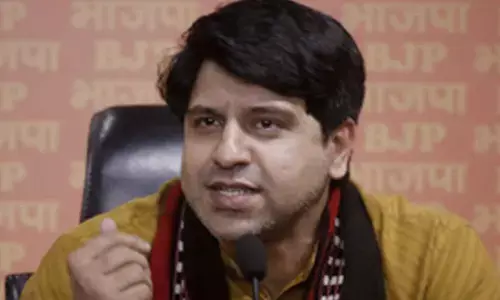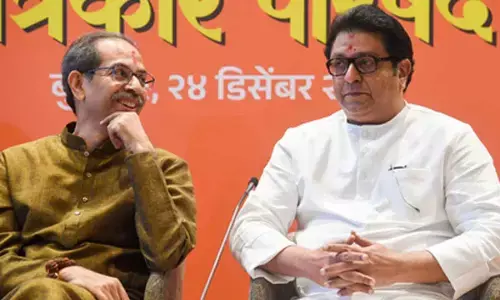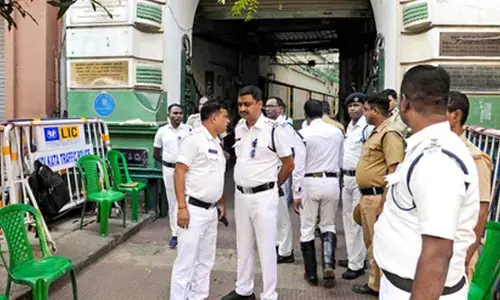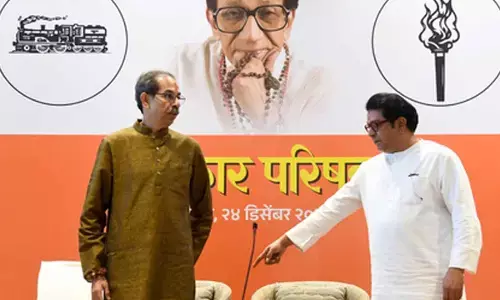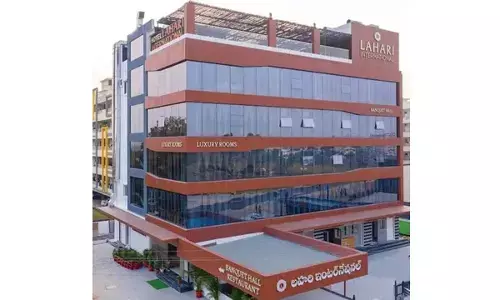Will dual force reign again in Bihar?

With senior Janata Dal-United (JD-U) leader Nitish Kumar walking out of the ‘Mahagathbandhan’ and joining hands once again with the Bharatiya Janata Party (BJP) ahead of the upcoming general election, political observers in Bihar underlined the good track record of the dual force – two parties going to polls together – in Assembly as well as Lok Sabha elections.
Patna: With senior Janata Dal-United (JD-U) leader Nitish Kumar walking out of the ‘Mahagathbandhan’ and joining hands once again with the Bharatiya Janata Party (BJP) ahead of the upcoming general election, political observers in Bihar underlined the good track record of the dual force – two parties going to polls together – in Assembly as well as Lok Sabha elections.
Speaking in the context of the fresh developments in Bihar, a political analyst said that Bihar has always witnessed the dominance of three parties – the Rashtriya Janata Dal (RJD), JD-U and the BJP. “It has been observed that whenever two political forces join hands in Bihar, they easily win the election... be it Lok Sabha or Vidhan Sabha polls. In the early 1990s when RJD’s Lalu Prasad was a dominant political figure in Bihar with Muslim, Yadav and backward caste equations balanced in his favour, the BJP and George Fernandes-led Samata Party joined hands together to challenge Lalu Prasad,” an analyst said.
They were successful for the first time in 2000 when they formed a “non-RJD government” in the state. Nitish Kumar became the Chief Minister of Bihar for the first time with 154 MLAs. However, after the RJD-led alliance soon assembled with 159 MLAs, the Nitish Kumar-led government collapsed. However, that experiment was worth it for BJP and Samata Party with the JD-U coming to power in 2005. Nitish Kumar again became the CM.
In the 2014 Lok Sabha polls, Nitish Kumar left the National Democratic Alliance (NDA) after the BJP named then Gujarat CM Narendra Modi as the PM candidate. The JD-U then contested the polls alone in Bihar. The RJD also contested that election alone, and both these two parties performed miserably. The RJD won only 4 seats and JD-U got two seats. In that election, BJP won 22 seats. Even the alliance partners of BJP like RLSP led by Upendra Kushwaha won 3 seats and Ram Vilas Paswan-led LJP 7 seats in Bihar. However, the vote percentage of RJD and JD-U were 20.10 and 15.80 per cent, respectively, and the BJP had 29.40 per cent. This had actually given hope to RJD and JD-U leaders that if they joined hands together, they could defeat the BJP. The think-tank of both parties believed that the BJP won the contest due to division of votes.
Later, Lalu Prasad and Nitish Kumar joined hands in the 2015 assembly election and managed to stop BJP’s winning spree. In 2015 polls, RJD won 80 seats with a vote percentage of 18.4 while the JD-U won 71 seats with a vote percentage of 16.8. The BJP won 53 seats and the vote percentage was 24.4 per cent. In 2019 Lok Sabha election, the JD-U and BJP in Bihar contested together, and the dual force theory got further solidified. The BJP won 17 seats with vote percentage of 23.58 per cent, the JD-U bagged 16 seats with 21.81 per cent votes and LJP won 6 seats with vote percentage of 7.86. The RJD did not win a single seat in that election.
The dual forces’ dominance continued in the 2020 assembly election too when the BJP and JD-U pact continued. In 2020 Bihar elections, BJP won 74 seats with a vote percentage of 19.46 while the JD-U won 43 seats and the vote percentage was 15.39. The RJD had bagged 75 seats and its vote percentage was 23.11.
While analysing the trend, it has been observed that the percentage of votes of two major parties have always been higher than the “third party”. Political analysts that keeping all these factors in mind, the BJP and the JD-U must have joined hands ahead of the 2024 Lok Sabha election to gain an edge over RJD and other alliance partners of ‘Mahagathbandhan’.
This could be the reason why the BJP opened its doors to Nitish Kumar. This time, the BJP has been eyeing at least 16 to 17 seats. Besides, analysts believe the party has a trusted partner like Chirag Paswan who has considerable influence on Dusadh community. Notably, the BJP has aimed for all 40 Lok Sabha seats in Bihar and its chances look quite bright now with Nitish Kumar stitching an alliance with the saffron camp, analysts say.








